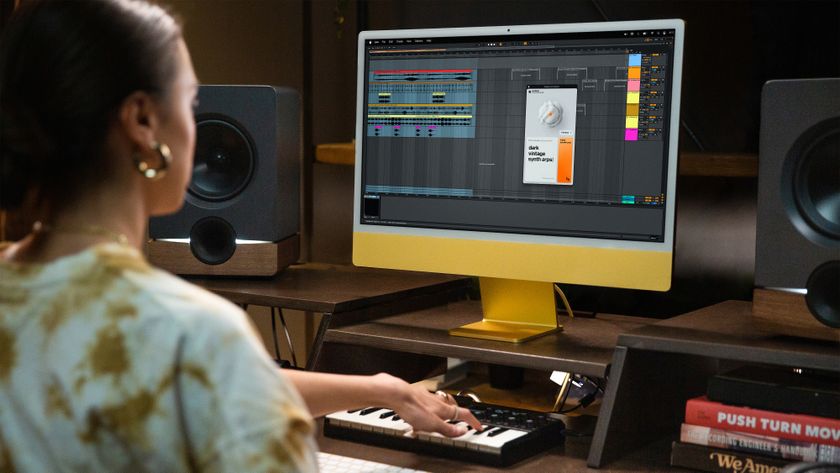Focusrite iTrack Solo brings "quality recording to iPad"
2-channel audio interface also works with PC and Mac

Focusrite iTrack Solo

Focusrite iTrack Solo

Focusrite iTrack Solo

Focusrite iTrack Solo
If you want to use your iPad to make decent quality recordings then you're going to need an interface of some sort. This is where Focusrite's new iTrack Solo comes in.
This is a 2-channel, aluminium-enclosed box that's similar in design to Focusrite's Scarlett 2i2 USB. In fact, the iTrack Solo can also work as a standard PC/Mac USB interface.
Usefully, there's no need for a Camera Connection Kit when you're using the device with the iPad - it comes with a cable that goes directly into the dock connector.
Find out more in the press release below. The Focusrite iTrack Solo costs £130 and will be available from October.
Focusrite iTrack Solo press release
With a quarter of a century of experience building legendary pro-audio equipment for top recording studios around the world, leading UK-based pro-audio manufacturer Focusrite turns its attention to recording on the iPad with the launch of the new iTrack Solo - a compact, aluminium cased 2-channel interface for the iOS platform. It is also fully compatible with Mac and PC computers.
Focusrite's iTrack Solo is a dual-input audio interface designed for recording instruments and vocals, bringing Focusrite versatility and no-compromise sound quality to the world of iPad audio recording for the first time. iTrack Solo is the perfect companion for any singer/songwriter wanting to take their demos to the next level - with audio quality that's so good, they can be used in the final mix. The interface is compatible with GarageBand and other popular recording apps, and it can be used on a Mac or PC with up to 24-bit/96kHz digital performance.
Get the MusicRadar Newsletter
Want all the hottest music and gear news, reviews, deals, features and more, direct to your inbox? Sign up here.
iTrack Solo features a professional, low-distortion, low-noise Focusrite microphone preamp as used in Focusrite's flagship Liquid Saffire 56 interface. Phantom power allows the use of top-quality studio microphones, and alongside the microphone input on the front panel there's an instrument input that's perfect for guitar and bass, along with the very best in digital conversion for the ultimate in quality. With its rugged unibody aluminium chassis, it's perfect for recording guitar or keyboard and vocal on the go.
Owners of Focusrite's popular Scarlett 2i2 USB interface will find the layout and features quite familiar - in fact iTrack Solo is based on the proven technology found in Focusrite's existing range of computer audio interfaces. Focusrite's signature "halo" indicators around the input knobs let you know if you are recording at the correct level (green) or at too high a level (red). There's a large monitor knob that controls the output level. Monitoring can be switched to listen to your recording signal against your backing track without incurring off-putting latency introduced by your music software.
A supplied cable connects iTrack Solo to the iPad, powered by the included USB cable that delivers the power necessary to run the iTrack's high-specification components. There is also a pair of phono connectors on the rear panel for connecting an audio system for playback.
Key Features
- High-quality award-winning Focusrite microphone input: iTrack Solo draws on Focusrite's 25-year expertise in high-performance pro-audio
- Made for iPad. Compatible with Mac OS X and Windows: Record with many apps including GarageBand - with up to 24-bit, 96kHz sampling
- Direct connections for microphone and instrument: Plug electric, electroacoustic or bass guitar and microphone into the front panel to record in pristine quality
- Signal halos for level and clip indication: Two lights surround the input level knobs to ensure recording at the correct volume
- Connect directly to a loudspeaker system: Rear panel phono connectors provide line level outputs to an audio system for playback
- Aluminium unibody case: Roadworthy protection for even the most adventurous musician

I’m the Deputy Editor of MusicRadar, having worked on the site since its launch in 2007. I previously spent eight years working on our sister magazine, Computer Music. I’ve been playing the piano, gigging in bands and failing to finish tracks at home for more than 30 years, 24 of which I’ve also spent writing about music and the ever-changing technology used to make it.











